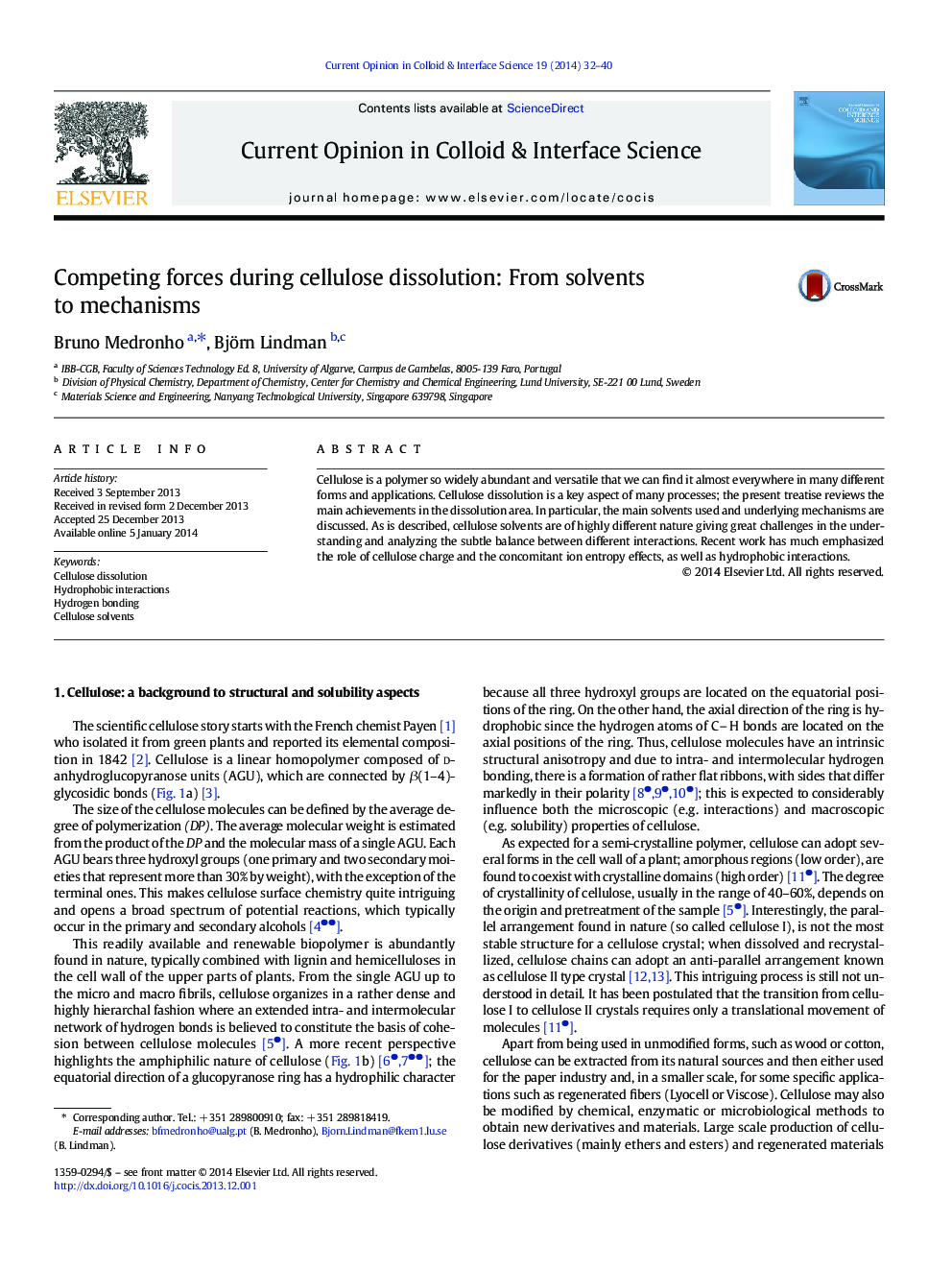| Article ID | Journal | Published Year | Pages | File Type |
|---|---|---|---|---|
| 603176 | Current Opinion in Colloid & Interface Science | 2014 | 9 Pages |
•Solvents and mechanisms in cellulose dissolution are reviewed.•Discussion highlights the amphiphilic properties of cellulose.•H-bonding and hydrophobic interactions are responsible for cellulose solubility.
Cellulose is a polymer so widely abundant and versatile that we can find it almost everywhere in many different forms and applications. Cellulose dissolution is a key aspect of many processes; the present treatise reviews the main achievements in the dissolution area. In particular, the main solvents used and underlying mechanisms are discussed. As is described, cellulose solvents are of highly different nature giving great challenges in the understanding and analyzing the subtle balance between different interactions. Recent work has much emphasized the role of cellulose charge and the concomitant ion entropy effects, as well as hydrophobic interactions.
Graphical abstractFigure optionsDownload full-size imageDownload high-quality image (199 K)Download as PowerPoint slide
